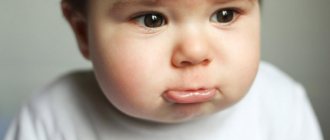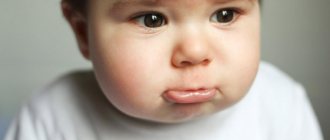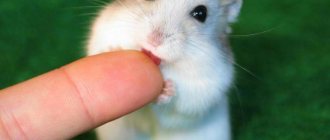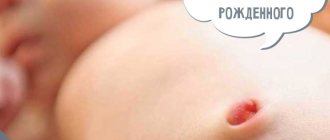What types of wounds are there?
A wound is a tissue damage that is characterized by a violation of the integrity of the skin or mucous membranes. The wound is accompanied by pain and bleeding.
The first sign is pain. It occurs due to damage to local nerve endings, and subsequently due to swelling, which puts pressure on the nerve and irritates it. In this case, pain can spread not only along the surface of the wound, but also along the damaged nerve.
The second mandatory sign of a wound is bleeding. It occurs as a result of damage to capillaries, veins or arteries. Bleeding can be weak and drip, for example, with a small cut, and severe when the integrity of the vein and artery is damaged.
The third sign of a wound is gaping. However, gaping appears only with deep wounds, for example, with abrasions it does not exist. Gaping is the divergence of the edges of the wound on either side of the axis of the cut. If there is severe gaping, the wound is usually sutured.
There are many types of wounds. For a person in everyday life, it is necessary to know several classifications. The first is based on whether there is an infection in the wound. Wounds may be aseptic, contaminated, or infected.
An aseptic wound is a pure injury to the skin. Usually these are surgical wounds that are performed in order to penetrate the internal organs. Children most often experience contaminated wounds. This means that microbes have entered the area of skin damage. At first, these are relatively safe wounds: local protective mechanisms inhibit the development of microorganisms. If a contaminated wound is not treated, it becomes infected: an infectious process develops, which is accompanied by inflammation, severe pain and suppuration. An infected wound can cause a strong reaction in the child’s body: body temperature rises, chills, drowsiness and apathy appear.
Depending on the nature of the damage, there are the following wounds:
- punctured - they occur when punctured by a narrow and piercing object, for example, when a child falls on a nail. Typically, a puncture wound bleeds slightly and hurts. Outwardly it may seem that this is a safe wound, but this is not so: large vessels, nerves are often damaged, and even an infection occurs;
- cut - occur upon contact with a sharp oblong object: a knife, razor, sharp scissors, a shard of glass and paper. With an incised wound, the tissue is usually slightly damaged. The wound bleeds heavily and hurts moderately;
- Chopped wounds occur when damaged by a heavy sharp object, such as an ax. Usually the bleeding is moderate, but the wound is very painful and gapes. May lead to serious condition;
- a bruise wound appears when struck with a blunt object or falling on asphalt. Most often, the bruised wound is located on the head, elbows and knees. The edges of a bruised wound are uneven and soaked in blood. It bleeds slightly and is moderately painful.
There are also bite wounds that occur when children are bitten by animals or other children. The difficulty with this wound is that in most cases it contains infection from the animal's oral cavity. This is how rabies, insect and snake poison, and putrefactive infection are transmitted.
The wound process consists of several stages:
- In the first seconds after skin damage, local blood vessels reflexively constrict and biologically active substances are produced - platelets, which adhere to the wound area and close the damaged vessel. The blood clotting system turns on, stopping the bleeding. In a healthy child, bleeding stops on its own within 15 minutes.
- Inflammation. Lasts 3 days from the moment of injury. Inflammation is manifested by pain, redness and local fever. Also, swelling in the form of a tumor appears on the wound within two hours.
- 2–4 hours after injury, leukocytes migrate to the area of injury. They absorb foreign particles and cleanse the wound of microorganisms.
- Healing phase. Begins 3–5 days after injury. Bioactive substances arrive to damaged tissues, which restore vascular and skin tissue.
- Epithelization phase. Begins 2 weeks after injury. The wound mark becomes pale and a scar forms. The epithelialization phase may be delayed if bacteria are present in the wound.
Wound treatment algorithm
What to do if your child falls, cuts or hits himself:
- Make sure you're safe: you've shooed the dog away, put away the knife, turned off the chainsaw, removed any broken glass.
- Usually, in a situation of injury, the child is frightened: by pain or by the fact of the cut. Reassure him and tell him that nothing bad happened. Make him feel protected.
- Before treating a wound, first wash your hands with soap.
- Remove clothing from the wound site: roll up your shirt sleeve, lift up your T-shirt or pant leg. Examine the wound. Try not to touch the wound with dirty hands.
- If the capillaries are damaged, bleeding is minor. Rinse the wound with warm water, apply hydrogen peroxide and bandage with gauze.
- Gently clean the wound of debris and dirt under warm water. To do this, use cotton swabs or gauze soaked in a disinfectant.
- Disinfect the wound. Usually at home there is always an alcohol solution of iodine, cologne, hydrogen peroxide, alcohol or strong drinks. Dilute alcohol with water so as not to burn the wound. If the wound is extensive, alcohol and iodine cannot be used, they will lead to a chemical burn and the wound will heal more slowly.
- Apply sterile material to the wound and bandage it. You need to bandage so that the bandage covers the wound site. It should not be tight or too soft.
What to do if your child is bleeding heavily:
- Assess the severity of bleeding. If the wound bleeds heavily with dark or scarlet blood, spurts out and the blood erupts synchronously with the heartbeat, the bleeding must be stopped at any cost.
- Call an ambulance. One person provides first aid, the second calls the team. Please note that if the wound is penetrating, that is, a screwdriver or knife is stuck into the body, you cannot remove the object yourself. Be sure to wait for an ambulance.
- Find a tissue or any other tissue in your bag or home medicine cabinet that can be applied to the wound.
- If the wound is on the extremities, place the child on his back and raise the injured limb above the level of the heart, bending them at the elbow or knee. This is temporarily uncomfortable but slows down blood flow.
- Apply a tourniquet. If you don't have one, use a belt, tie, suspender or wire. You need to place a napkin or cloth under the tourniquet so as not to injure the skin. For arterial bleeding, a tourniquet is applied above the wound site; for venous bleeding, a pressure bandage is applied to the wound. Note the time of application of the tourniquet, write it down with a pen or felt-tip pen (not red) on the skin near the tourniquet. Remember that in summer the maximum time for applying a tourniquet is 90 minutes, in winter – 60 minutes. If after this time the ambulance has not arrived, and you have not yet reached the hospital, carefully loosen the tourniquet so that the tissues of the limb receive blood, while pressing the bleeding site with gauze. If the bandage becomes saturated with blood, tighten the tourniquet again until the bleeding stops completely and record the new time on the skin.
It is not recommended to give your child painkillers. This is hampered by the fact that each drug has an expiration date and doctors need to recalculate the doses of a new painkiller or wait for the previous one to expire in order to avoid an overdose. But if you cannot do without pain relief, write down the time and name of the drug you gave your child. Save the empty vials of medication and give them to the ambulance crew so they know what you gave to the victim.
First aid for parents
The lip is a very delicate part of the human body. Under the thin skin of the lips there are a huge number of small capillaries, which even with the slightest injury bleed heavily. A child can break his lip anywhere: he can trip and fall, hit a door frame while running enthusiastically, fight with a peer over a toy, etc. Of course, your own child’s broken lip is not a sight for the faint of heart. But a parent must be able to cope with their emotions, remaining calm and confident. But what should be done if a child has such an injury?
- If a child breaks his lip on the street, the wound should be blotted with a clean bactericidal wipe or a regular handkerchief. Before treating a wound, be sure to wash your and your child’s hands and treat them with an antiseptic to reduce the risk of infection of the wound.
- At home, the wound on the lip should be washed with slightly warm water. If there are grains of sand or particles of earth on the wound, it is important to carefully remove them with a stream of warm water.
- Treat the wound with hydrogen peroxide, even if it is located inside the lip. To do this, soak a cotton swab in a disinfectant and apply it to the damage for a few seconds.
- You can disinfect the oral cavity if the child rinses it with a solution of the drug Miramistin or chamomile infusion. If the baby does not yet know how to do this, apply a cotton pad soaked in one of these products to the wound.
- Instead of antiseptic drugs, you can use natural honey - it copes well with germs and heals small wounds. However, it is better to lubricate the child’s lip with sweet medicine at night so that the baby does not feast on it.
- If you have successfully stopped the bleeding, inspect the injury both inside and out: the lip may look swollen. If so, apply a cold compress to it.
- It is not recommended to use brilliant green and iodine to treat a wound on the lip, since these products can damage the delicate skin of the organ, and iodine will contribute to the resumption of bleeding.
- If your lip is severely broken and you find a fairly deep wound, it is better to rush to the trauma department or call a doctor at home. Your baby may need stitches.
If a child manages to break his lip, do not scold him for his carelessness and clumsiness. Show how much you love your baby, be confident in your actions, don’t panic. Feeling parental support, the baby will quickly calm down, and only a slightly swollen area on the lip will remind of the past injury. And remember: if a child’s temperature rises due to an injury, the frenulum, teeth or gums are severely injured, and the wound is deep or completely through, do not hesitate to visit a doctor - doing it on your own in this case can lead to irreversible consequences.
What to do if a child swallows a coin?
What to do if a child gets his finger caught in a door?
What to do if a child has been bitten by a wasp: first aid
Treatment of abrasions in children
How to properly treat abrasions in children:
- Wash your hands.
- Clean the skin around the wound from dirt, dust, debris and other objects.
- Disinfect the wound: the abrasion can be treated with the following products: zinc oxide ointment, benzalkonium chloride cream, dexpanthenol cream, chlorhexidine, methyl blue, hydrogen peroxide, brilliant green and 5% iodine solution.
- Usually, mild capillary bleeding occurs with abrasions. It is enough to apply a dry cloth or gauze to the damaged skin.
What to do if the wound does not heal for a long time
The wound may not heal for a long time. This occurs due to several factors: the skin is not cleaned after injury, blood flow is complicated due to inflammation, or the regeneration mechanism is disrupted. Because of this, complications arise:
- Seroma is an accumulation of inflammatory fluid (exudate) in the wound cavity. Seromas most often occur when dirt, microorganisms, or foreign bodies remain in the wound;
- wound hematoma. It appears due to the fact that after the wound the bleeding did not stop completely, and drops of blood gradually soaked the surrounding tissue. Hematomas also occur as a result of diseases in which blood clotting is impaired;
- necrosis of soft tissues. Occurs due to severe and massive tissue damage or cutting of blood vessels. Early signs of necrosis: in the first days after injury, the skin is pale, has a bluish tint and is cold to the touch;
- malignancy is a process when tissue cells acquire the characteristics of a tumor. Malignization occurs when a chronically non-healing wound.
In addition, the wound may not heal for a long time with poor immunity, diabetes, long-term use of glucocorticoids and vitamin deficiency. The only correct option is to consult a surgeon: at home it is impossible to assess the condition of the wound and provide proper medical care.
What to do if your child has a broken lip
If your child falls or hits an object and breaks his lip, then you need to act according to the following plan:
- First of all , parents must calm down themselves, because they need to act clearly and confidently. Then calm the child down, explain that you will help him now;
- Before touching your sore lip , be sure to wash your hands with antibacterial soap. Then wash your baby’s hands, because most likely he will touch the wound, which can cause infection. If you are outside, use antiseptic spray or wipes. Such things should always be with you when you walk;
- Rinse the damaged area with warm boiled water. Try to visually assess how deep the wound is. If it seems deep, then seek medical help; if not, continue treatment at home;
- Now you need to disinfect the damaged area to protect it from the penetration of pathogenic microbes. To do this, use a weak solution of potassium permanganate or hydrogen peroxide (3%). Moisten a cotton wool or disk with antiseptic liquid and apply to your lip;
- If a child has broken the inside of his lip , then it can be treated with a solution of Miramistin or Chlorhexidine. These antiseptics are effective against bacteria and viruses. It is enough to apply a cotton wool soaked in liquid to the wound. If the child is already old enough, then suggest that he rinse his mouth with the solution;
- Swelling appears at the site of injury ; to reduce it, apply a cold compress. To do this, take a piece of ice from the freezer, wrap it with gauze and a clean cotton napkin. You can also use a chilled spoon.
After this, carefully examine the wound again; if it is deep, then go to the doctor. You may need to get stitches to prevent a scar from remaining on your lip.
When to see a doctor
To protect your child from complications, you need to know in what situations to consult a doctor:
- if after 15 minutes the wound has not stopped bleeding even when applying a pressure bandage;
- if outside the wound the skin begins to become numb, cool, and acquire a pale or bluish tint;
- if you are not sure that the wound is completely cleaned of splinters, rust, dirt and other foreign objects;
- if the injury occurred on the neck;
- if the child was bitten by an animal;
- the wound does not heal within 10 days.
Warning signs also include: an increase in the child’s body temperature, increased swelling, increased pain, a burning sensation and severe redness of the wound.
A wound is tissue damage that requires first aid. However, if you treat the wound according to the algorithm, after 10–15 minutes the bleeding stops, and by the end of the day or the next day the pain goes away. The main thing when a child is injured is not to give in to emotions, calm the child, act quickly and call an ambulance or see a doctor.
2
1
0
Article rating:
4.29 out of 5 based on 7 ratings
Author: Popov Evgeniy Vladimirovich
Orthopedist-traumatologist, pediatric orthopedist-traumatologist. Highest category. Work experience 11 years.
Bruised lip: medications and folk remedies
In the case of concussion, a visual examination of the patient is sufficient to assess the scale of the tragedy. Injuries that are not too serious can be treated at home. Ask your pharmacist and he will definitely advise you on effective measures. Daily manipulations include:
- constant treatment of the wound area with antiseptics;
- Washing the internal wound with a decoction of chamomile, propolis in water, sage;
- treating lips with Troxevasin ointment. The product relieves swelling, fights hematomas;
- The healing process will be accelerated by Badyaga gel;
- lotions with lead water. The product has an analgesic effect and solves the problem of swelling.
Badyaga gel - a remedy for bruises and bruises
Remedies that are available in every home will also help with bruising of the lower and upper lip and the appearance of a bruise:
- cabbage leaf A small piece is put on and sealed with plaster;
- A mixture of crushed aloe leaf and 1 tablespoon of honey. Apply to the sore spot for 15 minutes, then rinse your mouth thoroughly;
- black tea lotions. Dip the bag in a little hot water, take it out, squeeze it and apply it to the bruise for a few minutes;
- If it's summer outside, you need to find celandine. The juice of the grass is squeezed out. Periodically apply a cotton pad soaked in juice to the bruise;
- Potato starch is an excellent remedy for hematoma. It is diluted with water to form a paste and applied to the wound.
- Bright orange, milky celery juice accelerates the healing of bruises.
- The recovery process usually takes several days. If after 3-4 days the situation has not changed or worsened, consult a doctor immediately. They will assess the condition, help remove the hematoma and tell you how to reduce swelling after a bruise on the lip.
- What not to do if you have a bruised upper or lower lip
- In order not to aggravate the situation and cause even greater swelling on the lip, in no case should you take the following measures:
- Apply something warm to the bruise and also apply ointments with a warming effect. They dilate blood vessels, causing bruising;
- Use iodine or verdigris. These products may cause chemical burns to sensitive mouth skin;
- Use of cosmetics and decorative cosmetics. If these products come into contact with a wound, it will cause inflammation;
- Avoid foods that are too cold or too hot;
- prolonged exposure to the sun or frost.
If there is a strong blow and cut, the bruised wound may bleed. In this case, you will need to sew. You should not do such manipulations on your own - it is better to seek help from a doctor. What are the consequences after a bruised lip?
Although bruising and swelling of the lip are not serious in themselves, treating a bruised lip incorrectly or not treating it properly can lead to complications. The worst consequence of a bruised lip is infection, followed by pus deposits and blood poisoning. Deep trauma causes lip deformation, which requires surgery.









